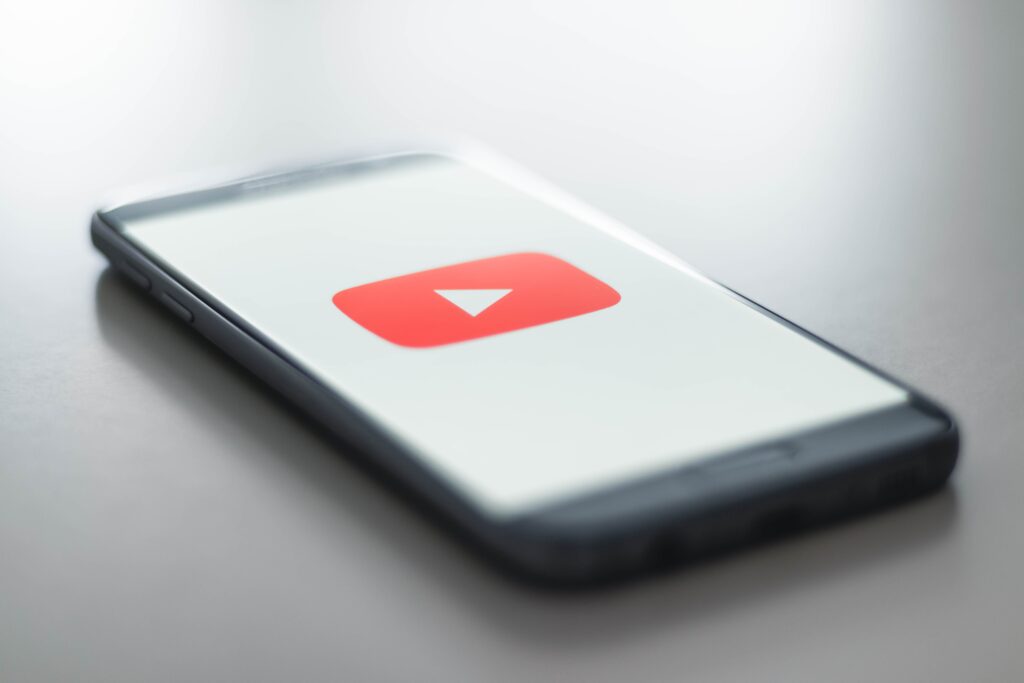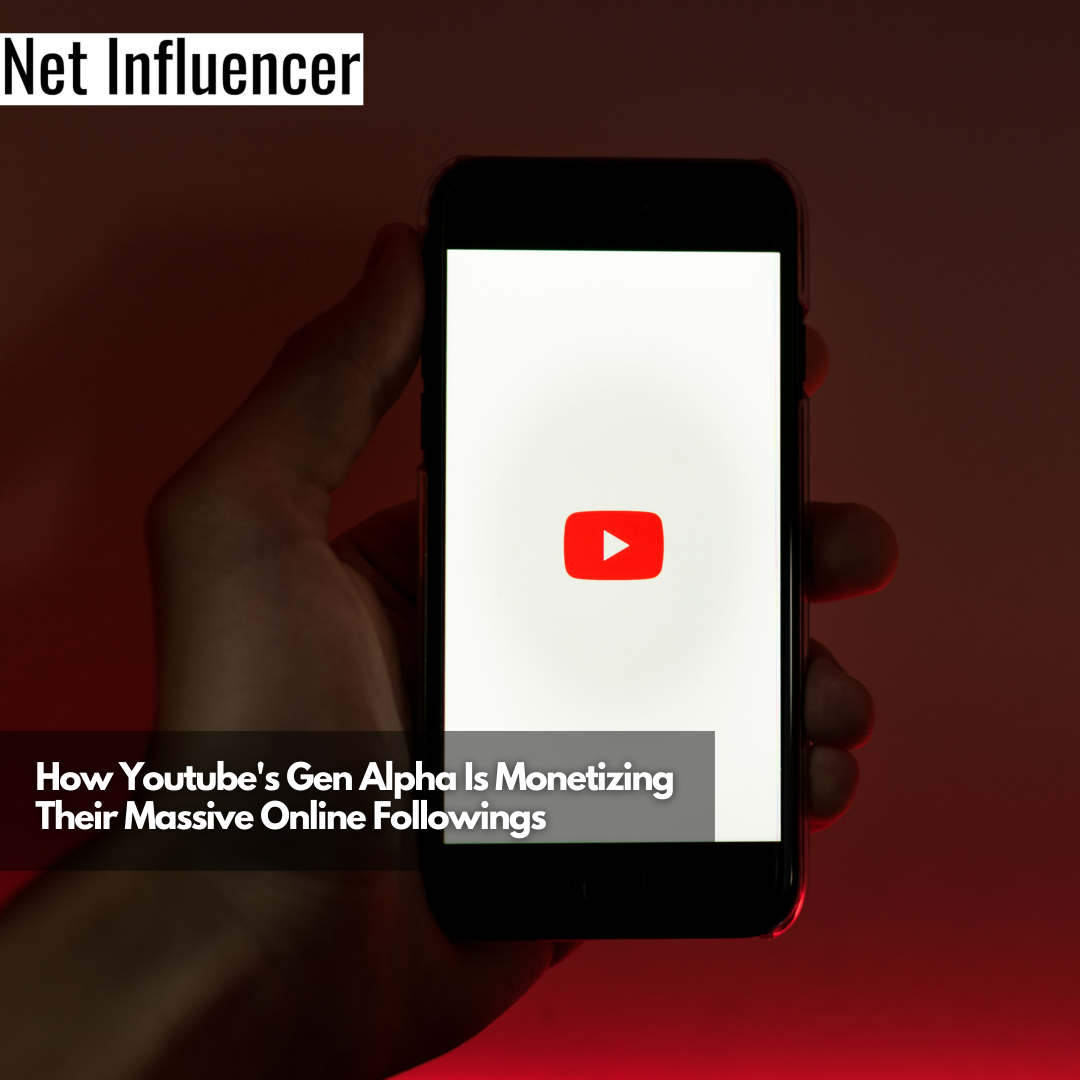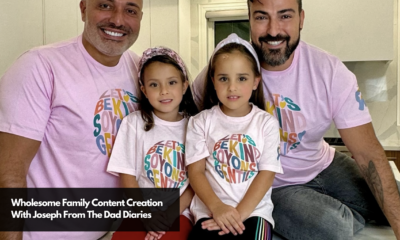Strategy
How Youtube’s Gen Alpha Is Monetizing Their Massive Online Followings
The generation that’s not yet old enough to vote or get their driver’s license seems to be at the forefront of consumer spending changes, for this reason, companies and marketing departments are taking notice.
Born from 2013 onwards, Gen Alpha is already the most technically-savvy generation of kids, with recent data suggesting that they are forming powerful brand preferences before even turning nine. This should come as no surprise when over fifty percent of Gen Alpha own tablets or Ipads – connectivity isn’t in short supply!
How exactly is Gen Alpha impacting the markets? And how does their influencer status differ from previous generations?
In this article, we’ll be answering those questions plus a lot more, at the same time as taking a look at some of the most famous Youtube Gen Alpha influencers, their respective brand partnerships, and how they are using their connectivity and online voices to monetize social media.
What are Gen Alpha Influencers?
Gen Alpha is the demographic born after Generation Z. Pop culture and researchers place the start date for this cohort in early 2010 and with the ending birth years within the early 2020s.
Generation Alpha is named after the Greek alphabet’s first letter, and it’s the first generation that has been born entirely in the third millennium or 21st century. Members of this generation mostly consist of Millenials children and the popular term was coined by McCrindle Research during a 2008 survey. Mark McCrindle is generally considered the originator of the term Gen Alpha.
Even though Gen Alpha is still young, they’ve already experienced a ton of worldly events. Born during a time when lockdowns from an unforeseen pandemic changed our lives forever, and when civil and cultural unrest reigns supreme – the effects of which have played a key role in their online behaviors and level of connectivity.
This generation’s entertainment is mainly electronic and online, with streaming platforms and social media taking center stage while the once-popular cable tv viewership falls. Leaving backyard treehouses and evening bike rides around the neighborhood as a thing of the past.

They’ve seen changes in education formats, accelerated due to online learning amidst the pandemic, something that other generations did not experience either. This simple fact has had such an impact that many marketers refer to this generation as Gen C (C for Covid).
And although there are many positive aspects to the level of technological dependence and connectivity this generation is growing up with, there are plenty of studies suggesting that the heightened amount of screen time is a key factor in obesity, allergies, and other mental health-related issues that kids have begun facing in recent years.
Nevertheless, this gen is the first to be truly tech-native so it makes perfect sense that they are fast becoming online creators and influencers.
How Does Gen Alpha Make Money from Social Media?
It’s common knowledge that marketing firms don’t usually start taking notice of a specific demographic until that generation is well into their teenage years. The main reason for this is consumer spending power begins to normally grow during that time frame. But this doesn’t seem to be the case with Gen Alpha, as they appear to have more spending power than any other generation before during those pre-teen years.
Because of the reach social platforms and streaming services offer, Gen Alpha children are already influencing pop culture and markets across the globe. Generation Z paved the way and set the foundation by leaving their mark and focusing on personal brands. But now, Gen Alpha has begun this same virtual journey at a way younger age, influencing and making money online by creating Minecraft content, selling or reviewing toys, and setting consumer trends.
This is one of the reasons why brands are already incorporating Gen Alpha-specific campaigns and building a strategy around this cohort.
Gen Alpha’s Favourite Platforms And Internet Hangout Spots
When it comes to Gen Alpha’s favourite online places to hang out Youtube and Netflix seem to be their preferred choices. But, let’s take a closer look at Gen Alpha’s internet behavior and why their platform preferences are so different from those of previous generations.
One of the main reasons this gen loves Youtube is due to the Kid’s channel that allows parents and kiddos to access age-appropriate content. Youtube ensures that there are parental controls in place so that verification is necessary – this is a clear winning point for stressed millennial parents who are more lenient with screen time thanks to these types of features.

In a similar fashion, Netflix also offers a dedicated content library aimed at children from Gen Alpha. The popular streaming platform markets child-friendly content across a wide variety of platforms in order to catch the attention of both kids and their Millenial parents, with Instagram being at the forefront of this effort.
Next up is Minecraft. Which, unless you’ve been disconnected from internet access you’ll know is one of Gen Alpha’s favorite platforms. The brand is no stranger to this fact – the interactivity of the game is what kids seem to love – so they’ve transmuted this same effect across their social media to allow Gen Alpha to interact further and co-create alongside them.
And although data suggest that gaming is losing momentum with Gen Alpha, that doesn’t seem to be the case for Roblox. The platform has seen a huge increase in users, with 63% of its customer base being under 16 years old and a whopping 55% between the ages of 9 to 12.
Roblox allows users to create and play games, yet Gen Alpha has also taken to using the platform as a social network by building niche communities, connecting, sharing, and even socializing in-app.
Lastly, according to recent data from GWI, TikTok is also a preferred platform for Gen Alpha, with an 18% increase in users each year between the ages of 13 to 15.
TikTok outperforms all other social platforms when it comes to acquiring Gen Alpha users, with 20% of children stating it’s their favorite social network.
Ultimately, there are key similarities between Gen Alpha’s favorite platforms, with the main element being the fact that all of these options empower their users to become co-creators.
TikTok, Roblox, and Minecraft allow for dialogue, and new levels of interactivity that we haven’t seen before.
Why are Brands Partnering With Gen Alpha Creators?
There are some interesting reasons why brands are already partnering with such a young generation. These children are no longer entertaining themselves with conventional toys, and instead have been connected to screens practically since birth. Their tech-savviness reigns supreme and is a key reason they have such an influence on their millennial parent’s spending.
Gen Alpha influencers have become some of the strongest brand advocates, with some of these kidfluencers promoting popular brands online long before they can even walk or talk. For example, the most popular kidfluencer is Ryan, a famous Youtuber with over 34 million subscribers. He uses his content to share toy reviews with his peers and according to online estimates made a whopping 22 million dollars last year.
Research showed that Generation Alphas are predicted to have the longest life expectancies, carry the most wealth, and be the most educated as well. Brands aren’t oblivious to this fact and have begun their efforts to attract loyalty and interest from this demographic.
Other data points that brands are taking into consideration when deciding to partner with Gen Alphas is the fact that over 55% of children surveyed by Wunderman Thompson Commerce spanning from the ages of six to sixteen, stated that they would consider purchasing a product that was recommended or worn by Instagram and Youtube influencers.
The rise of subscriptions, in-app gaming purchases, and digital media has ultimately created the youngest consumer demographic in history, with kids buying their own Disney + subscription or the latest gaming add-ons.
Brands and marketers know that they need to be including and partner with Gen Alpha influencers, because within a mere four years, this demographic is set to outnumber Baby Boomers, and it’s not long until the first batch of teenagers begins moving into adulthood years.
In 10 years Millennials, Generation Z, and Gen Alpha will account for the vast majority of the U.S. population. And with reports showing that over 75% of Gen Zer’s are more likely to purchase and support companies that are on the ball with social issues, paired with a whopping 34% of millennial audiences who state they refuse to purchase from companies whose values on cultural movements don’t align with their own, it’s only fitting that Gen Alpha follow in these footsteps. Giving brands all the more reason to begin working and appealing to this demographic, building relationships and loyalty, and learning what works and what doesn’t before their true spending power kicks in.
2 Successful Gen Alpha Youtube Brand Partnerships
Now that we’ve covered the basics and you have a better understanding of why brands are deciding to partner with Gen Alphas, it’s time to take a look at some of the most prominent examples of these collaborations in action.
- Ryan Kaji
Let’s start with the most famous Gen Alpha influencer, Ryan Haruto Guan whose often referred to as Ryan Kaji.
Ryan is a famous child Youtuber based in Hawaii, who mainly posts Youtube videos consisting of unboxings, toy reviews, childhood fun, and vlog-style updates. His mother, father, and two siblings often make appearances in his videos. According to his website, most of the toys featured in the videos, are later donated to charitable organizations.
Ryan uploads content every couple of days and is one of the leading channels on Youtube, featuring a video that is the sixth most watched on the platform as a whole. Sources speculate that Ryan’s channel is one of the most profitable enterprises on Youtube, with estimated earnings of 50 million in 2020.
His Youtube channel was nominated and won a Streamy Award in 2020 for the Kids and Family niche.
His most famous partnership to date was announced in 2018 during a New York toy fair. Ryan would go on to release his collection of toys in collaboration with Bonkers Toys and Pocket Watch.
The collection was initially released at Walmart but later went on to be available at Target stores nationwide and Amazon.
Some of the collection’s best-sellers include a Ryan action figure with a price tag of 9$, the slime that sold for 4$, french-fry themed toys which sold for 18$, and his popular Aladdin Build-A-Bear retailed at 60$.
- LikeNastyaOfficial
Nastya is one of the most successful child YouTubers at the mere age of eight. Her parents first started her account when she was two and soon discovered that Natya was a born entertainer. Her videos include roleplay content where she teaches her peers good behavior, etiquette, and manners.
Nastya promotes her own official merchandise line that she sells via her website. This includes products such as clothing, toys, and toiletries.
One of the reasons why Nastya’s content is so successful is because it’s dubbed and uploaded in a variety of different languages, giving her global appeal. Her content is also considered age-appropriate and kid-friendly, something that parents are always on the lookout for to help entertain their little ones.
In 2020, Like Nastay signed a contract with IMG to develop a line of consumer products on a global scale.
Her account is estimated to earn approximately 20 million per year just from Youtube advertising.
A couple of honorable mentions would include:
- EthanGamer, a British Youtuber who is well known for streaming his Roblox and Minecraft gameplay with fans around the world.
At present, Ethan has an ongoing brand partnership with Lego, Gravitax, and Spinmaster.
- And Coco Pink Princess, is a famous Gen Alpha Instagram influencer that’s been featured in Elle and Dazed Magazine thanks to her amazing fashion style, colorful looks, and chic online persona.
Coco has been posting fashion-related content since the age of five, now 10 years old she has over 635 thousand fans and is partnered with brands such as Gucci and Channel. Coco is also a regular attendee at fashion weeks.
Conclusion
Ultimately, there are plenty of reasons why brands are starting early and partnering with the youngest-ever generation of consumers – Gen Alpha.
This generation is no fool when it comes to online strategies, personal brands, and how to make money online. They’ve been connected since birth and are truly the tech-savviest generation, having been raised on a combo of screens and interactivity.





















